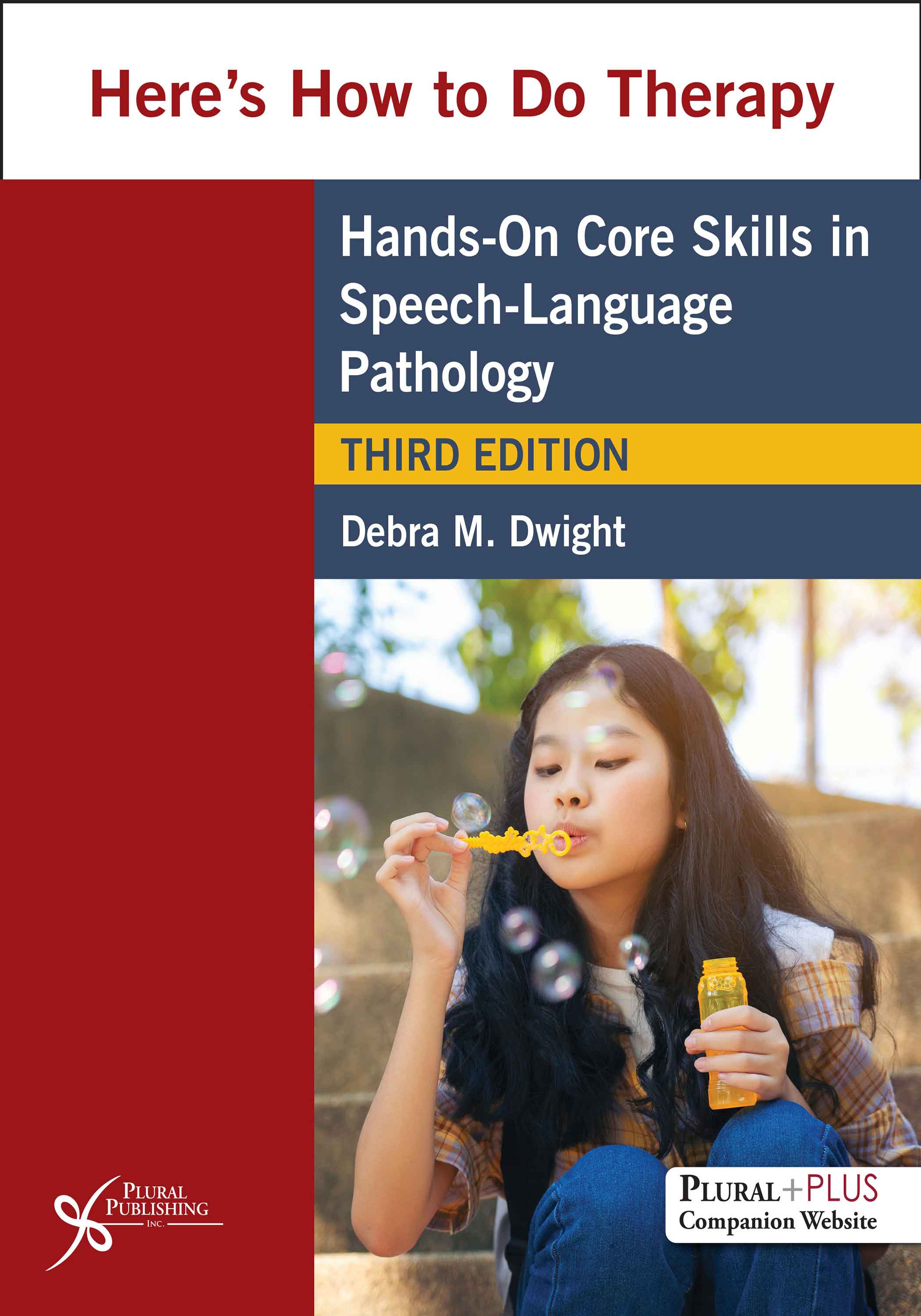
Here's How to Do Therapy: Hands on Core Skills in Speech-Language Pathology
Third Edition
Debra M. Dwight
Details: 460 pages, B&W, Softcover, 8.5" x 11"
ISBN13: 978-1-63550-320-3
© 2022 | Available
For Instructors
Purchase
Includes Videos!
The new and significantly updated third edition of Here's How to Do Therapy: Hands-On Core Skills in Speech-Language Pathology is an essential resource on effective evidence-based interventions for both practicing clinicians and students in academic speech-language pathology programs. Unique in design and content, the book and online supplementary materials provide a logical and manageable approach to enhance clinical skills through guided practice for different types of communication disorders.
Part I presents the basic considerations and foundations of the therapeutic process. Twenty-eight fundamental therapeutic skills are presented in a "workshop format" using organizers, definitions/demonstrations, think-out-loud questions, prompts for practice, post-organizers, and more. Readers are guided through a process for learning and demonstrating each of the 28 specific skills through use of three tools: Therapeutic-Specific Workshop Forms, Video Vignettes, and one Mini-Therapy Session.
Part II of the text contains seven Guided Practice chapters, with selected concepts and scripted examples of therapy sessions for receptive and expressive language, social communication for children with autism spectrum disorder (ASD), articulation and phonology, voice, swallowing, resonance, and adult cognitive communication.
New to the Third Edition
- Two new Guided Practice chapters: one on adult cognitive disorders and one on dysphagia/swallowing disorders
- Additional information on cultural and linguistic diversity, telepractice, AAC, phonological processes, and social communication for children with ASD
- Expanded focus on evidence-based practice
- A PluralPlus companion website with supplementary materials, including video demonstrations, printable forms, and PowerPoint lecture slides for instructors
Reviews
“It is very well done with a large amount of new information and a useful companion website. It is supported by therapeutic-specific workshop forms, practice charts, and videos that assist students, supervisors, and SLPs to learn how to do therapy in this fast-paced world. The resources are practical and full of materials SLPs can use on a day-to-day basis.
The author's goal is for people of all ages to learn about the fundamentals as well as the fine-tune aspects of speech-language pathology, resulting in SLPs finding their own intervention styles as they learn by experience.
All types of speech-language pathologists will enjoy this wonderful book. The author's obvious love for teaching and learning spreads throughout the book and all readers can learn a great deal by utilizing the large variety of therapeutic techniques that are presented. An SLP can choose to review one or more therapeutic specific workshops at a time.
The best aspects of this book are the wide variety of videos and scenarios and the useful glossary at the end. The website is full of materials that are useful to any SLP who loves teaching others how to become a successful SLP. The videos are enjoyable and the graphs, charts, and other materials are helpful.
This book is a gift to our field. There are so many things to learn from this book…it is worth it. By using this book and sharing it with others, our profession can only grow stronger in its knowledge base.”
–Lorelei J. Peirson, MA, Biola University, from Doody’s Reviews (July 2022)
Preface
Introduction. Here’s How to Use This Text
Teaching and Learning Pedagogy
Cooperative Learning
Interactive Nature of Learning
Critical Incidents in Learning
Overview of Focused Activities
Clinical Supervisor- or Instructor-Focused Activity Cluster
Textbook- or Companion Website-Focused Activity Cluster
Interactive Learning Group-Focused Activity Cluster
Overview of the 28 Therapeutic-Specific Skills
Welcome to This Text
PART I – INTRODUCTION
Chapter 1. Basic Considerations for the Therapeutic Process
Artistry in Speech-Language Pathology
"Showtime!"
Speech-Language Therapy and Task Analysis
Skills for Speech-Language Therapy
Therapeutic Mindset
Developing Therapeutic Mindset
Role of the Speech-Language Pathologist in the Therapeutic Process
Interpersonal Demeanor in Therapy
Nonverbal Behaviors and Emotional Affect in the Therapeutic Process
Professionalism
Professional Appearance
Excellence as Hallmark of Therapy
Time on Task as a Hallmark of Excellence
Chapter 2. Foundations for the Therapeutic Process: Overview
The Therapeutic Process Defined
Basic Confidence and Trust in the Therapeutic Process
Increasing the SLP's Confidence in the Therapeutic Process
Increasing the Client's Trust in the Therapeutic Process
The Therapeutic Relationship
Diversity and Multiculturalism in the Therapeutic Process
Referrals to Other Professionals
Chapter 3. Learning Theories Related to Speech-Language Intervention
Learning Defined
The Behavioral Orientation to Learning
The Cognitive Orientation to Learning
Humanistic/Experiential Orientation to Learning
The Social Orientation to Learning
Conclusion Regarding Learning Theories for Speech-Language Pathology
Learning Styles: Client and Clinical Applications
Global/Synergetic and Analytical Processing Styles
Visual, Auditory, and Tactile/Kinesthetic Preferred Modalities
Cultural Diversity and Learning Styles
Basic Concepts from Learning Theory Applied to Speech-Language Pathology
Telepractice in Speech-Language Pathology
Considerations for Engaging in Telepractice
Practical Guidelines for Telepractice
Chapter 4. Developmental Domains and Special Classifications Related to the Therapeutic Process: An Overview
Typical Developmental Expectations (Overview)
Communication Domain
Cognitive Domain
Motor Domain
Self-Help/Adaptive Domain
Social-Emotional Domain
Conclusion Regarding Developmental Domains
Disability Categories and their Impact on Speech-Language Therapy Progress
Autism Spectrum Disorder (ASD)
Implications for Speech-Language Therapy and Autism
Deafness
Implications for Speech-Language Therapy and Deafness
Emotional Disturbance
Implications for Speech-Language Therapy and Emotional Disturbance
Hearing Impairment
Implications for Speech-Language Therapy and Hearing Impairment
Intellectual Disability
Implications for Speech-Language Therapy and Intellectual Disability
Multiple Disabilities
Implications for Speech-Language Therapy and Multiple Disabilities
Orthopedic Impairment
Implications for Speech-Language Therapy and Orthopedic Impairments
Other Health Impairment
Implications for Speech-Language Therapy and Other Health Impairments
Specific Learning Disability
Implications for Speech-Language Therapy and Specific Learning Disability
Speech of Language Impairment
Implications for Speech-Language Therapy and Speech Impaired
Traumatic Brain Injury
Implications for Speech-Language Therapy and Traumatic Brain Injury
Vision Impairment Including Blindness
Implications for Speech-Language Therapy and Vision Impairment Including Blindness
Augmentative and Alternative Communication
Assessment of the Student for an AAC Device
Considerations for AAC Selection (Including Cultural Considerations)
Chapter 5. Hands-On Core Skills: The Speech-Language Pathologist as Facilitator of Positive Communication Change
Therapeutic-Specific Skills
Overview of Workshop Tutorials: How to Use This Chapter
Workshop Tutorials
Motivation
Communicating Expectations
Enthusiasm, Animation, and Volume in the Therapeutic Process
Seating Arrangements, Proximity, and Touch in the Therapeutic Process
Preparation, Pacing, and Fluency for Therapeutic Momentum
Antecedents: Alerting Stimuli, Cueing, Modeling, and Prompting
Direct Teaching: Learning Modalities, Describing/Demonstrating, Questioning, and Wait-Time in the Therapeutic Process
Stimulus Presentations: Shaping (Successive Approximations)
Positive Reinforcers: Verbal Praise, Tokens, and Primary Reinforcers
Corrective Feedback in the Therapeutic Process
Data Collection in the Therapeutic Process
Probing in the Therapeutic Process
Behavioral Management in the Therapeutic Process
Troubleshooting in the Therapeutic Process
Chapter 6. Basic Structure Within the Therapeutic Process
Management Concepts for Therapy
Time Frames for Therapy
Individual Versus Group Therapy
Homogeneous Versus Heterogeneous Groups
Interactive Group Therapy
Components of the Therapy Session
Therapeutic-Specific Skills and Components of the Therapy Session
Introduction of the Session
Body of the Session
Closing of the Session
Chapter 7. Peripheral Speech-Language Therapy Management Issues
Transition from Diagnostic Assessment into Therapy
Treatment Plans, Schedules, Progress Notes, and Dismissals
Treatment Plans
Schedules
Progress Notes
Dismissals
Start-Ups
Health and Safety Issues
Creating the Therapeutic Environment
Client Files and Documentation
Client Files
Documentation
Materials Management
Basic Therapy Kit
Use of Games in Therapy
Sanitizing Materials
Work Setting Issues
Communication for Professional Collaboratives
PART II – INTRODUCTION
Chapter 8. Guided Practice in Language-Based Therapy and Social Communication Therapy
Selected General Concepts for Language-Based Therapy
Selected Language Objectives
Semantics
Syntax
Morphology
Phonology
Pragmatics
Selecting Appropriate Materials for Therapy Based on Identified Objectives
Preparation and Therapy Progression for the Language-Based Therapy Session
Here’s How to Do Language-Based Therapy
Advance Organizer (Three Questions to Note)
Selected General Concepts for Social Communication Therapy
Serving Children With Autism Spectrum Disorder and Children With Social Communication Disorder
Guidelines for Writing Social Stories
Implementation of Social Stories
Advance Organizer (Three Questions to Note)
Chapter 9. Guided Practice in Articulation Therapy and Concepts Regarding Phonological Processes Therapy
Selected General Concepts for Articulation Therapy
Selected General Concepts for Phonological Processes Therapy
Determining Articulation Versus Phonological Processes Intervention
Selected Phonological Proceses Objectives
Selected Articulation Objectives
Here’s How to Do Articulation Therapy
Advance Organizer (Three Questions to Note)
Chapter 10. Guided Practice for Voice Therapy
Selected General Concepts for Voice Therapy
Selected Voice Objectives
Here’s How to Do Voice Therapy
Advance Organizer (Three Questions to Note)
Chapter 11. Guided Practice for Resonance Therapy
Selected General Concepts for Resonance Therapy
Selected Resonance Objectives
Here’s How to Do Resonance Therapy
Advance Organizer (Three Questions to Note)
Chapter 12. Guided Practice for Fluency Therapy
Selected General Concepts for Fluency Therapy
Selected Fluency Objectives
Here’s How to Do Fluency Therapy
Advance Organizer (Three Questions to Note)
Chapter 13. Guided Practice in Adult Language Therapy
Selected General Concepts for Adult Language Therapy
Focus for Therapy Interventions
Selected Adult Language Objectives
Here’s How to Do Adult Language Therapy
Advance Organizer (Three Questions to Note)
Chapter 14. Guided Practice in Swallowing Therapy
Selected General Concepts for Swallowing
Overview of Swallowing and Dysphagia
Normal Swallowing Overview
Forms of Swallowing Assessments
Cautions in the Basic Bedside Examination of Swallowing
Treatment Options for Intervention with Dsyphagia Patients
Selected Initial Assessment Objectives for Swallowing
Here’s How to Do Swallowing Therapy
Advance Organizer (Three Questions to Note)
Appendices
Glossary
Index
Here's How to Do Therapy: Hands on Core Skills in Speech-Language Pathology, Third Edition comes with access to supplementary student and instructor materials on a PluralPlus companion website.
STUDENTS & PROFESSIONALS:
To access the materials, you must register the access code* printed on the inside front cover of your book on the companion website.
INSTRUCTORS:
To access the instructor materials, you must contact Plural Publishing, Inc. to be verified as an instructor and receive your access code.
Email: instructormaterials@pluralpublishing.com
Tel: 866-758-7251 (toll free) or 858-492-1555
*Note: If you have purchased this book used or have rented it, your access code will not work if it was already redeemed by the original buyer of the book. Plural Publishing does not offer replacement access codes for used or rented books.
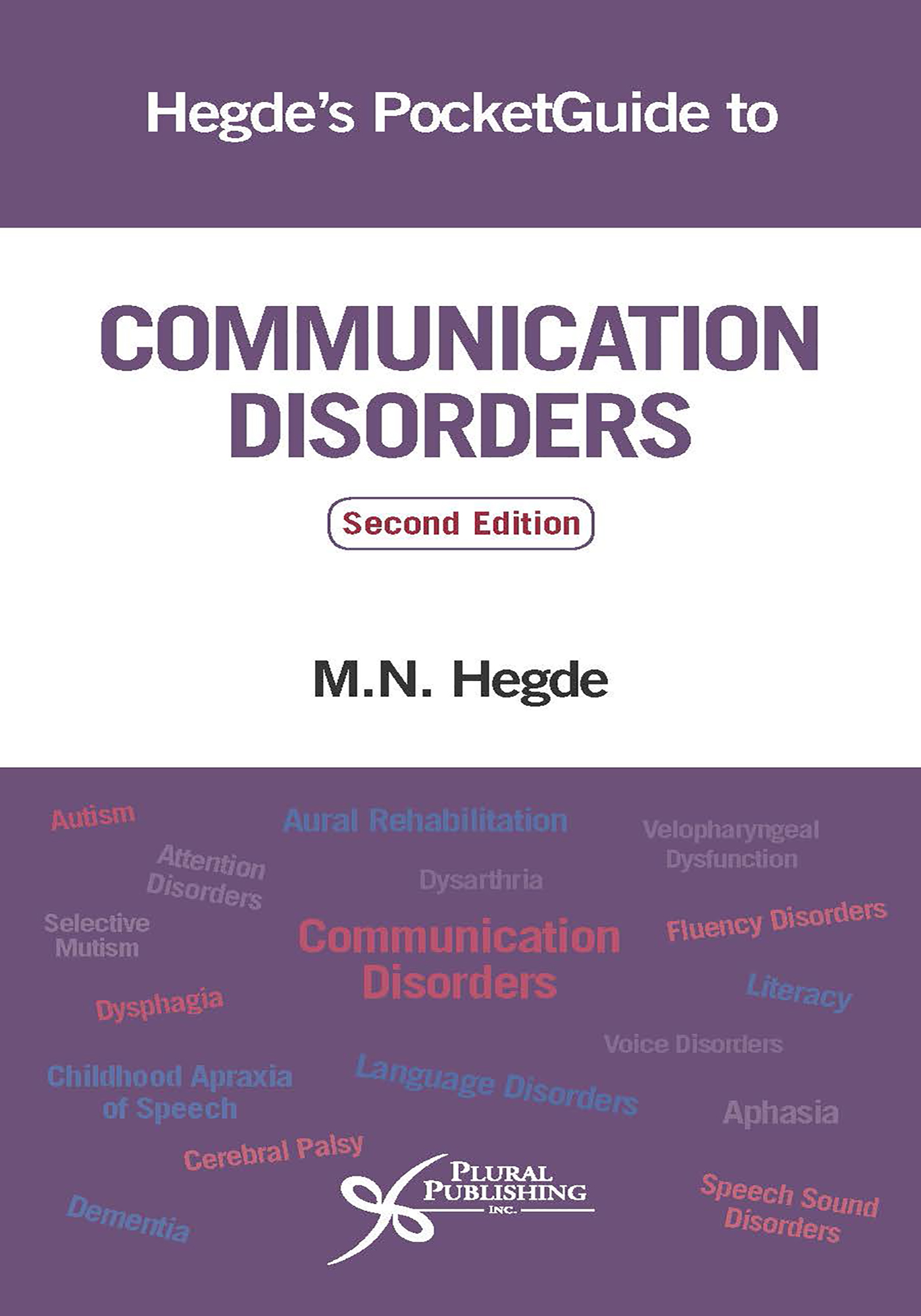
Hegde's PocketGuide to Communication Disorders
Second Edition
M.N. Hegde
Details: 496 pages, 2-Color, Softcover, 4.5" x 8"
ISBN13: 978-1-94488-314-0
© 2018 | Available
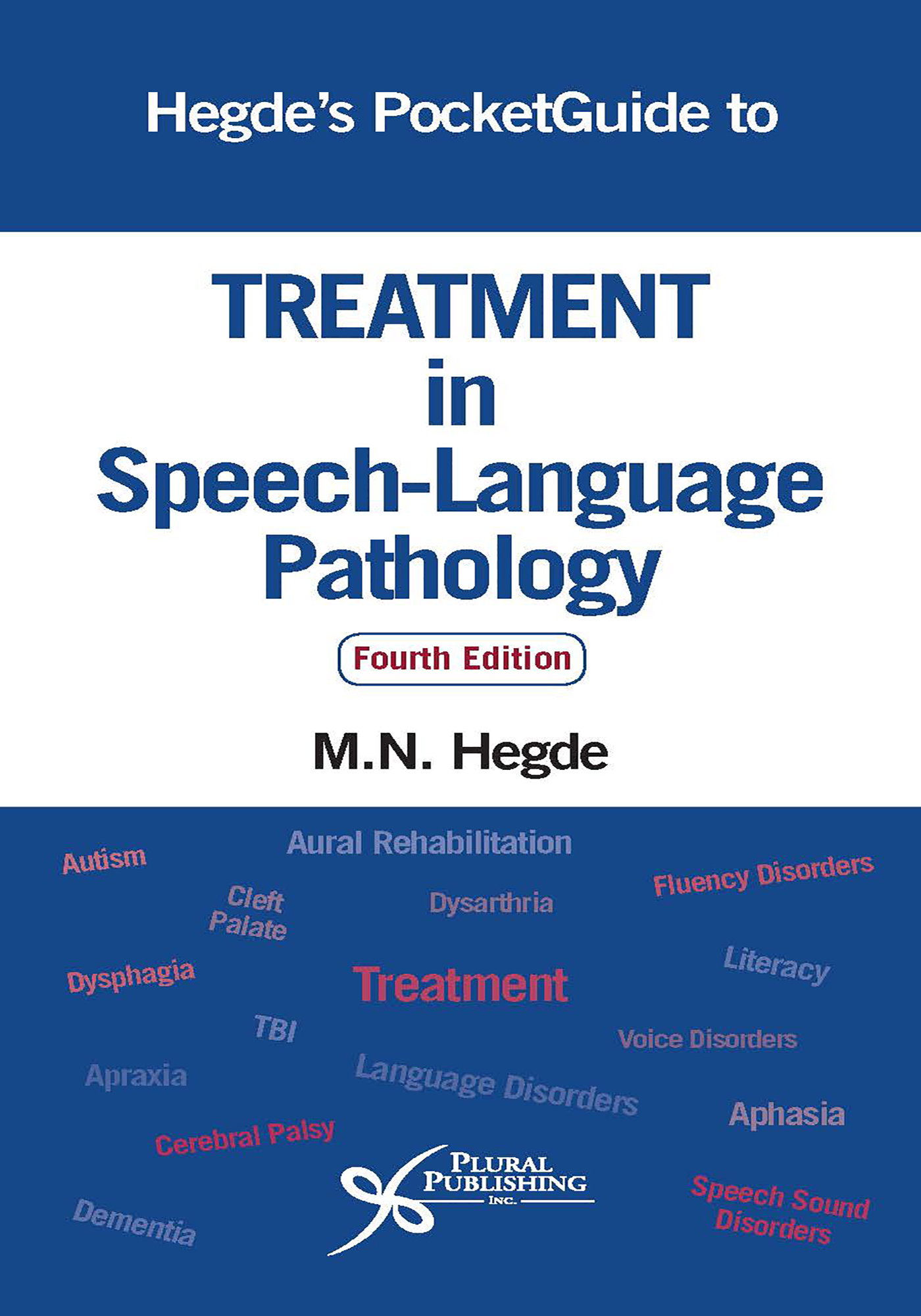
Hegde's PocketGuide to Treatment in Speech-Language Pathology.
Fourth Edition
M.N. Hegde
Details: 612 pages, 2-Color, Softcover, 4.5" x 8"
ISBN13: 978-1-94488-312-6
© 2018 | Available
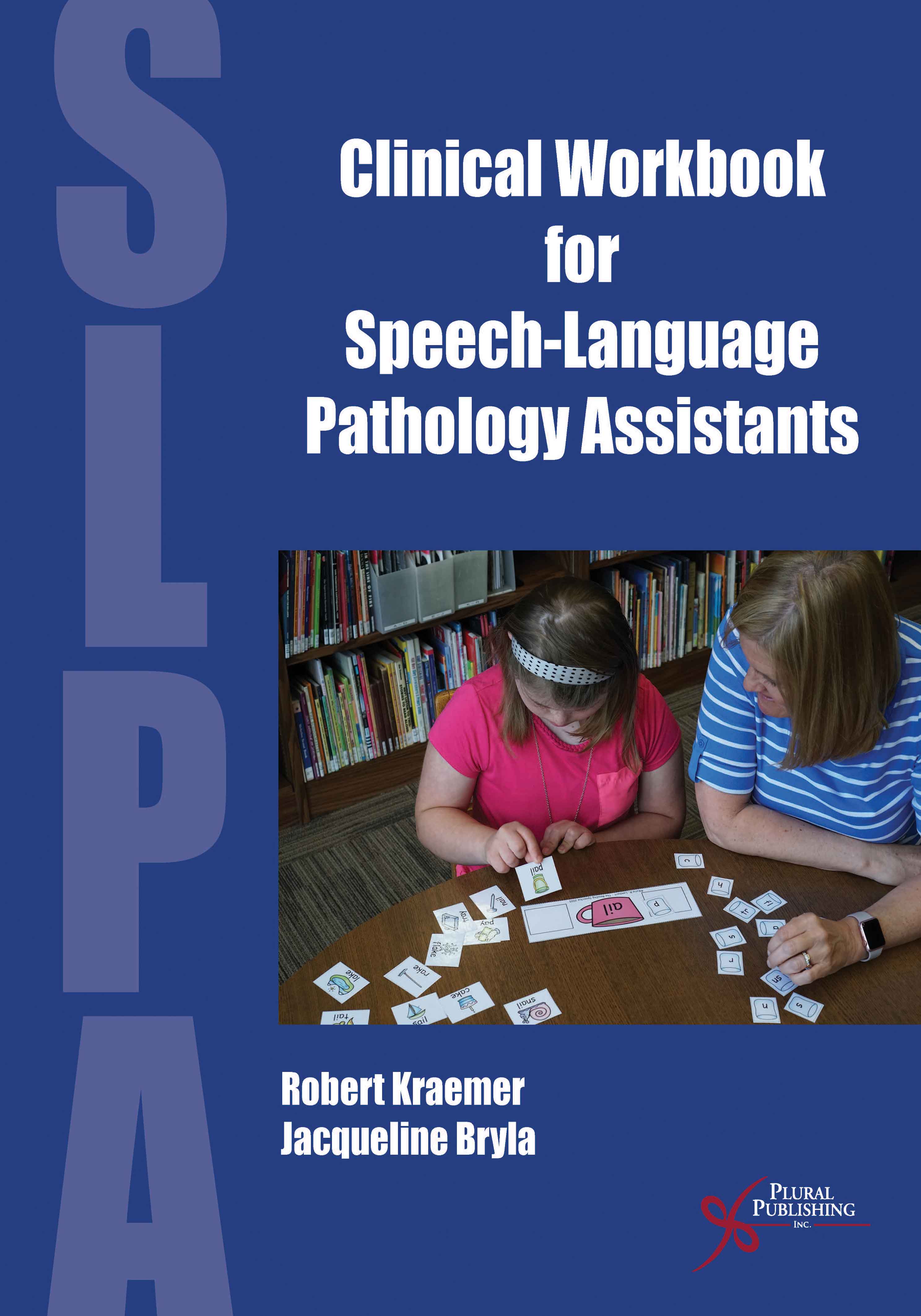
Clinical Workbook for Speech-Language Pathology Assistants
First Edition
Robert Kraemer, Jacqueline Bryla
Details: 278 pages, B&W, Spiral Bound, 8.5" x 11"
ISBN13: 978-1-59756-890-6
© 2018 | Available
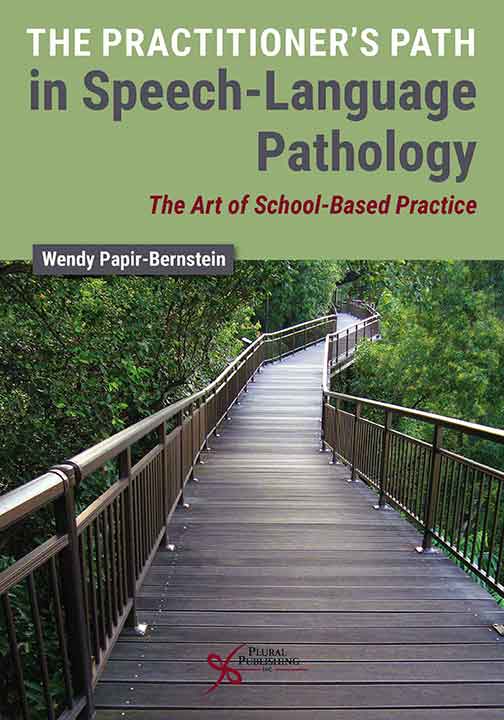
The Practitioner's Path in Speech-Language Pathology: The Art of School-Based Practice
First Edition
Wendy Papir-Bernstein
Details: 402 pages, B&W, Softcover, 7" x 10"
ISBN13: 978-1-94488-345-4
© 2018 | Available
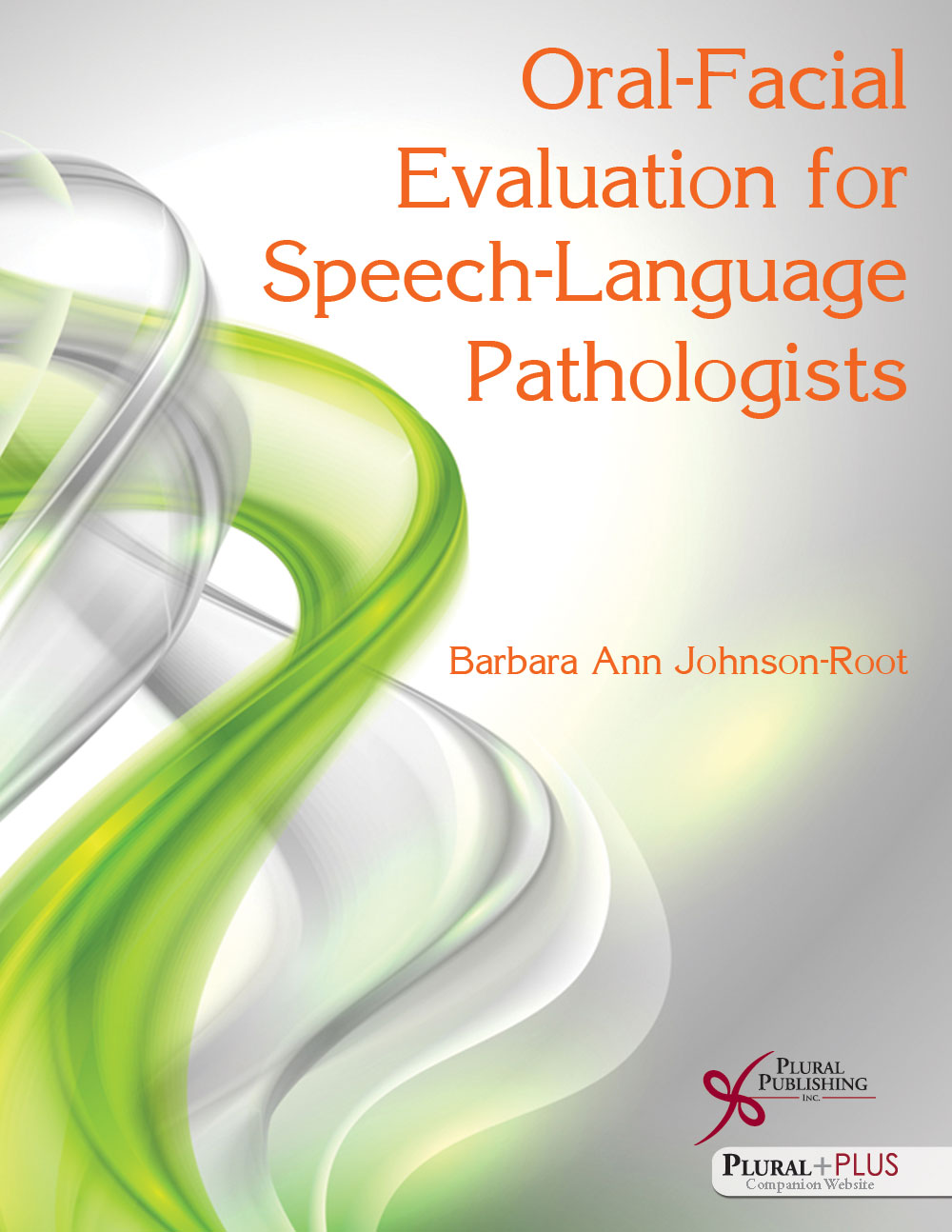
Oral-Facial Evaluation for Speech-Language Pathologists
First Edition
Barbara Ann Johnson-Root
Details: 480 pages, 2-Color, Softcover, 8.5" x 11"
ISBN13: 978-1-59756-575-2
© 2015 | Available
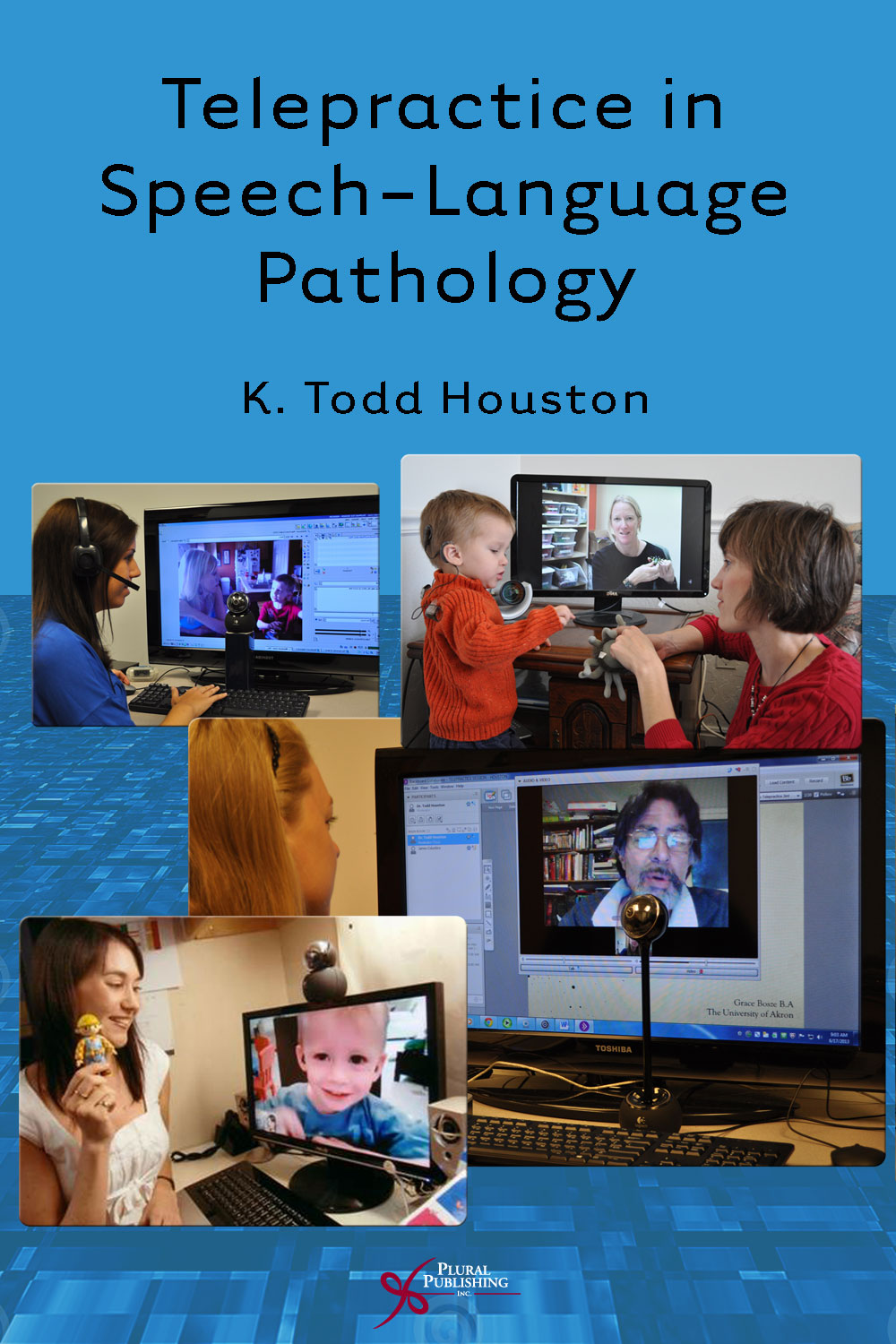
Telepractice in Speech-Language Pathology
First Edition
K. Todd Houston
Details: 392 pages, B&W, Softcover, 6" x 9"
ISBN13: 978-1-59756-479-3
© 2014 | Available
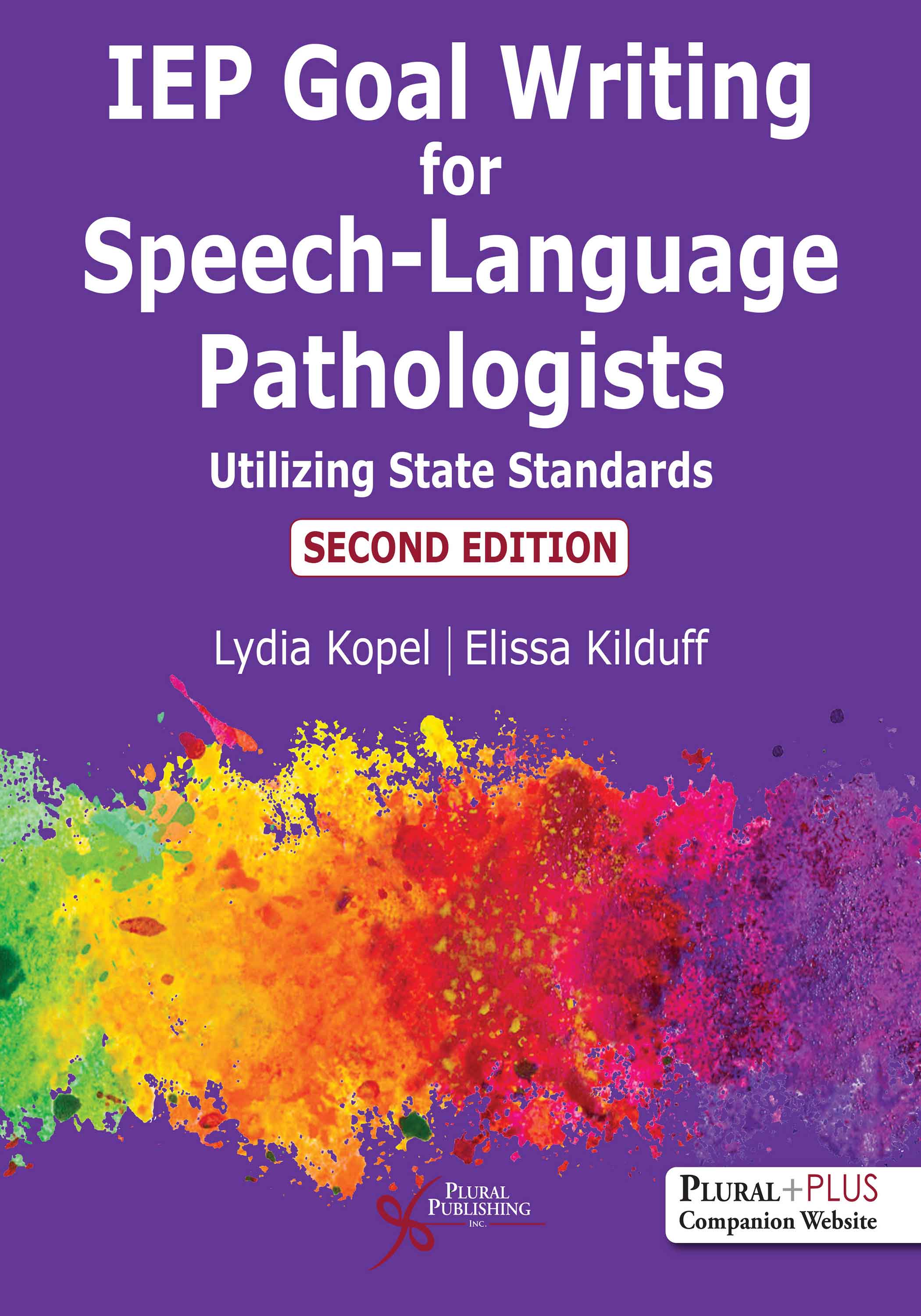
IEP Goal Writing for Speech-Language Pathologists: Utilizing State Standards
Second Edition
Lydia Kopel, Elissa Kilduff
Details: 243 pages, B&W, Softcover with layflat binding, 8.5" x 11"
ISBN13: 978-1-63550-202-2
© 2021 | Available
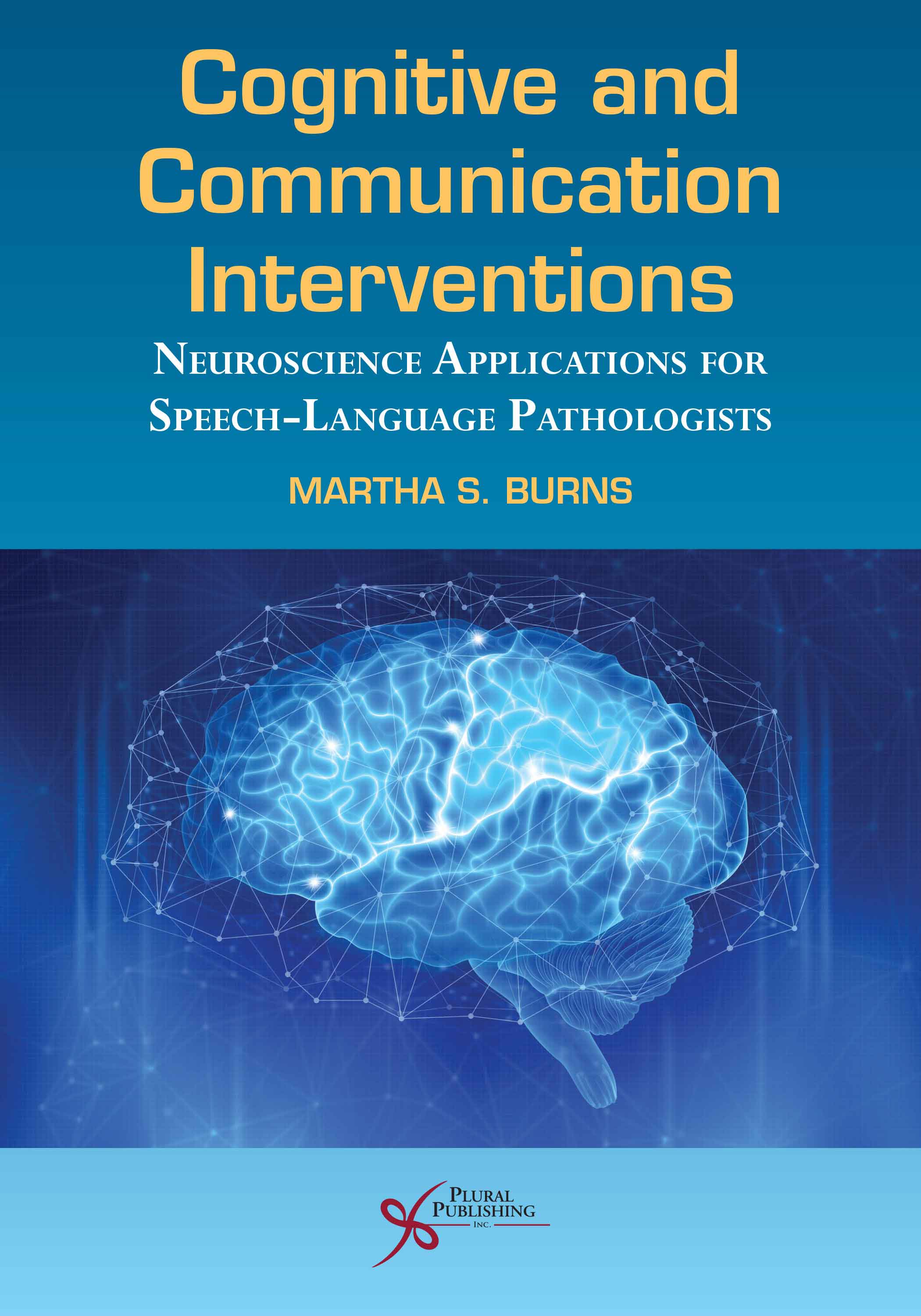
Cognitive and Communication Interventions: Neuroscience Applications for Speech-Language Pathologists
First Edition
Martha S. Burns
Details: 318 pages, B&W, Softcover, 7" x 10"
ISBN13: 978-1-63550-292-3
© 2021 | Available
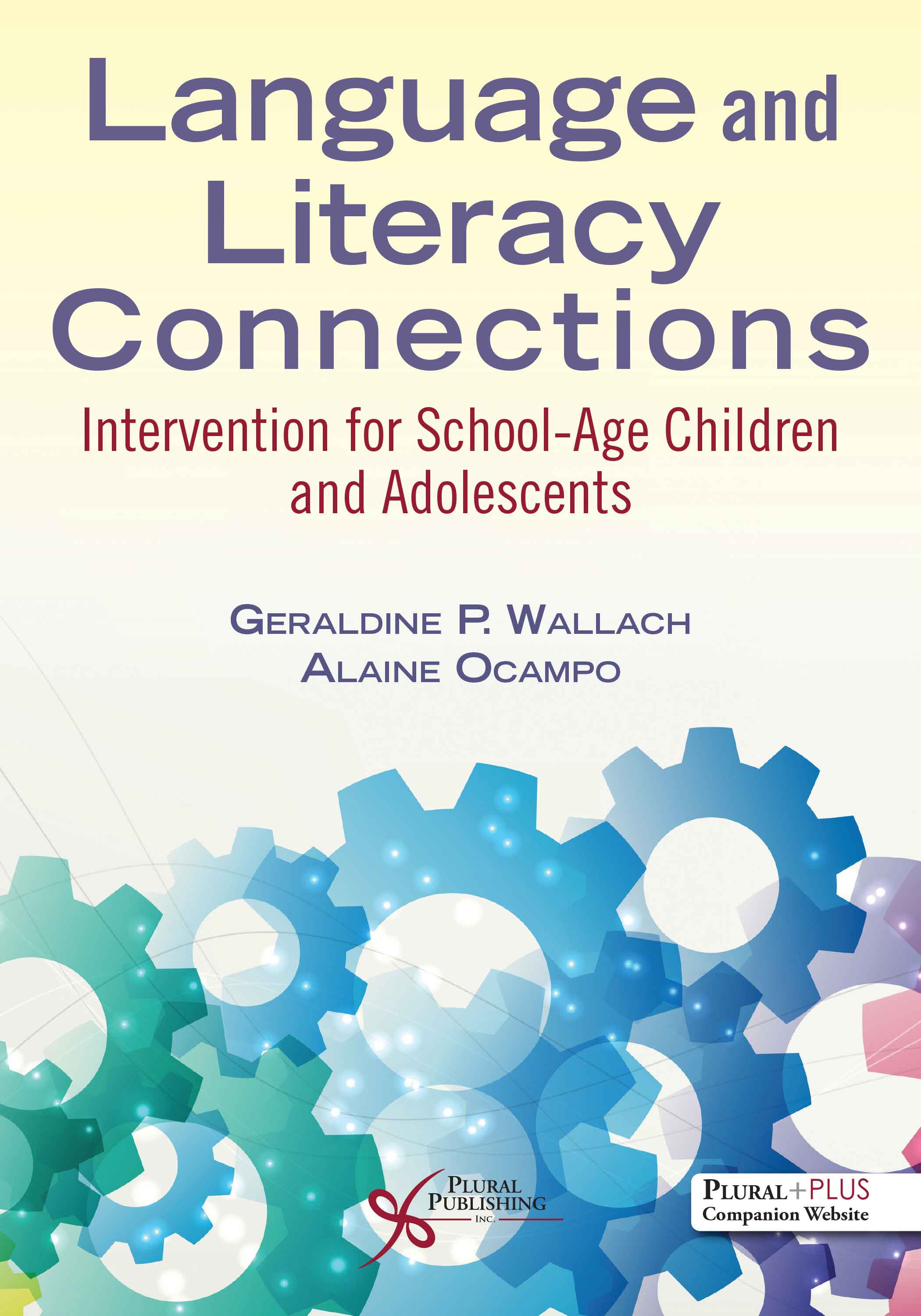
Language and Literacy Connections: Intervention for School-Age Children and Adolescents.
First Edition
Geraldine P. Wallach, Alaine Ocampo
Details: 358 pages, B&W, Softcover, 7" x 10"
ISBN13: 978-1-63550-213-8
© 2022 | Available
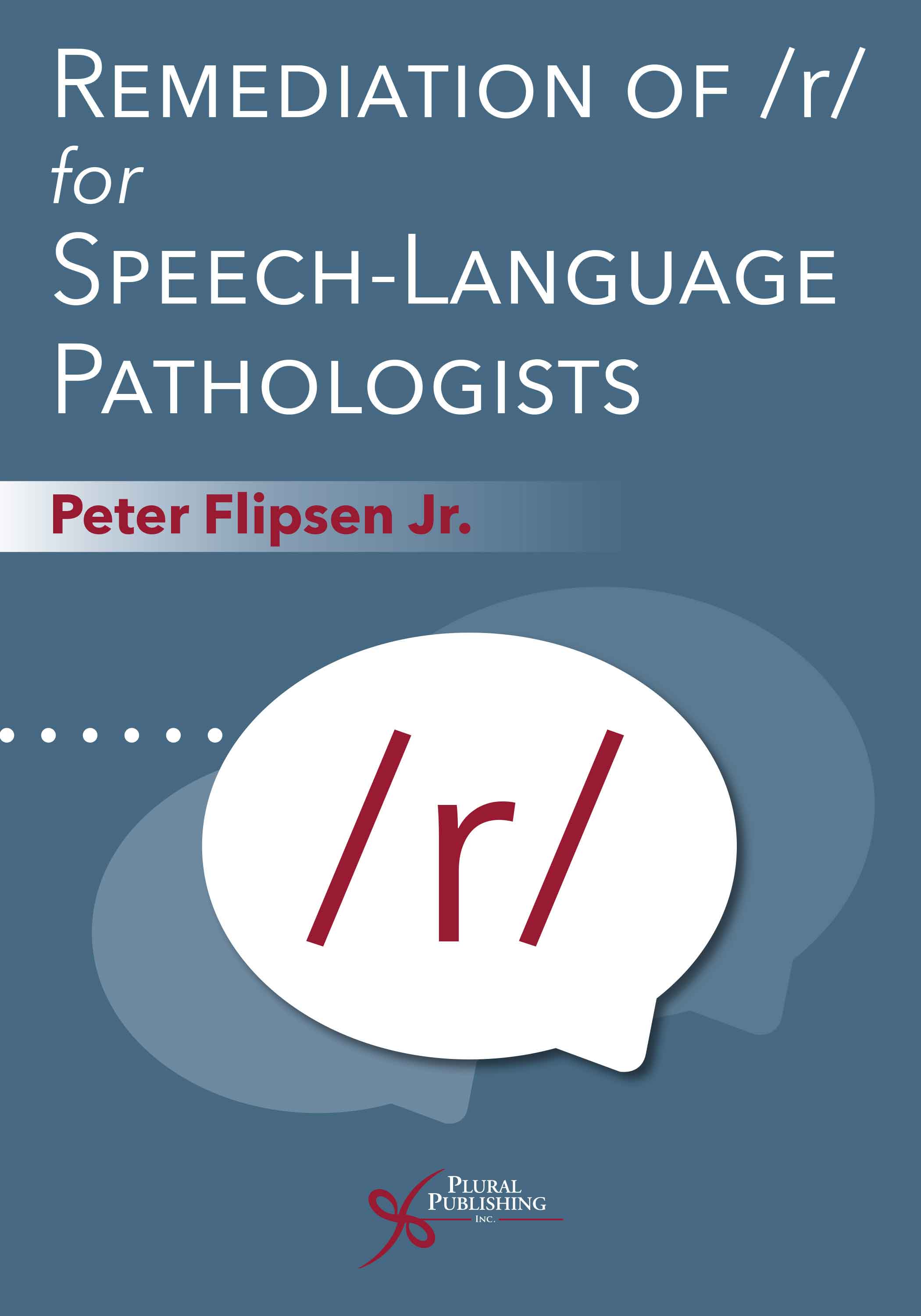
Remediation of /r/ for Speech-Language Pathologists
First Edition
Peter Flipsen Jr.
Details: 228 pages, B&W, Softcover, 7" x 10"
ISBN13: 978-1-63550-287-9
© 2022 | Available
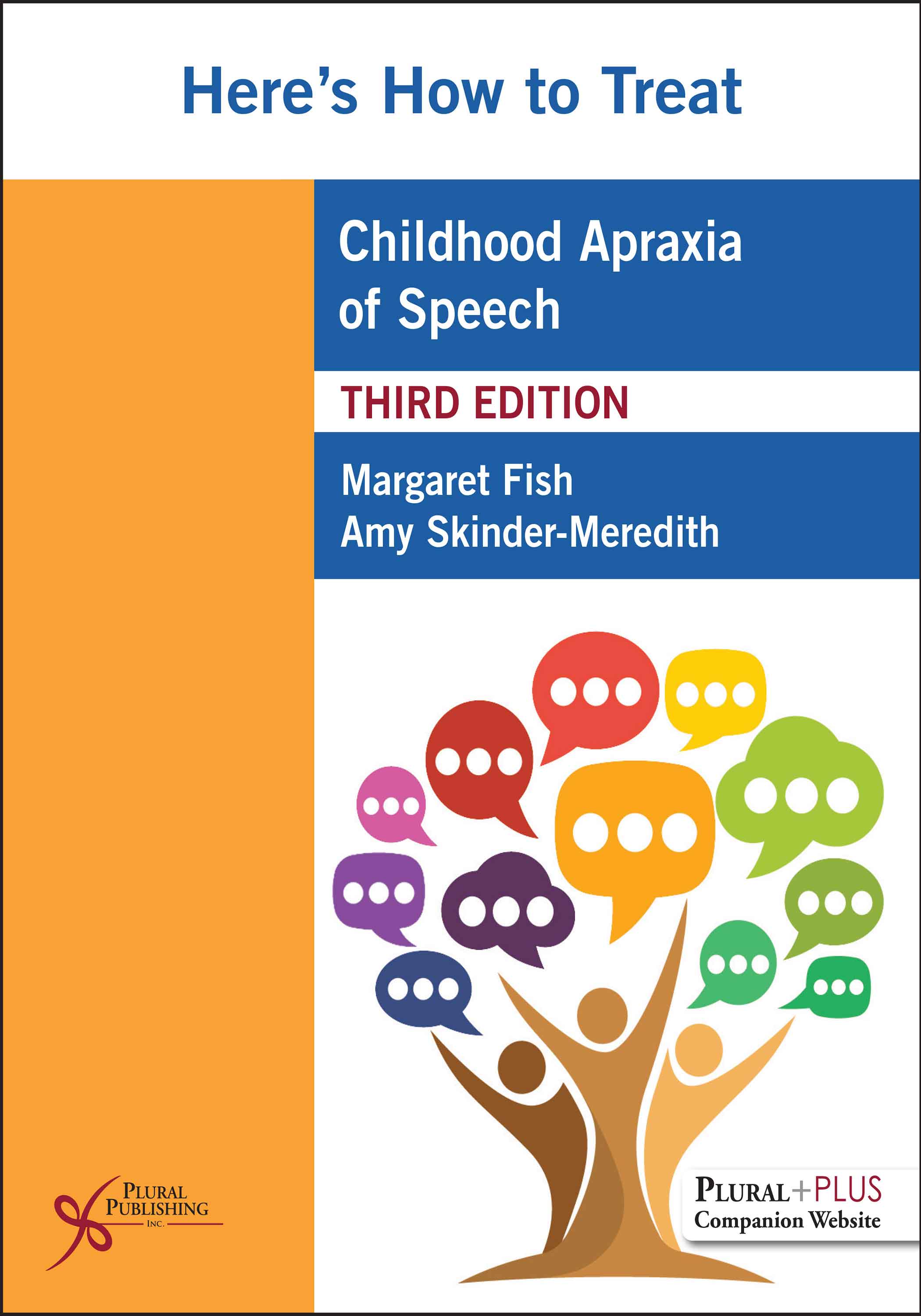
Here's How to Treat Childhood Apraxia of Speech
Third Edition
Margaret Fish, Amy Skinder-Meredith
Details: 401 pages, B&W, Softcover, 8.5" x 11"
ISBN13: 978-1-63550-283-1
© 2023 | Available
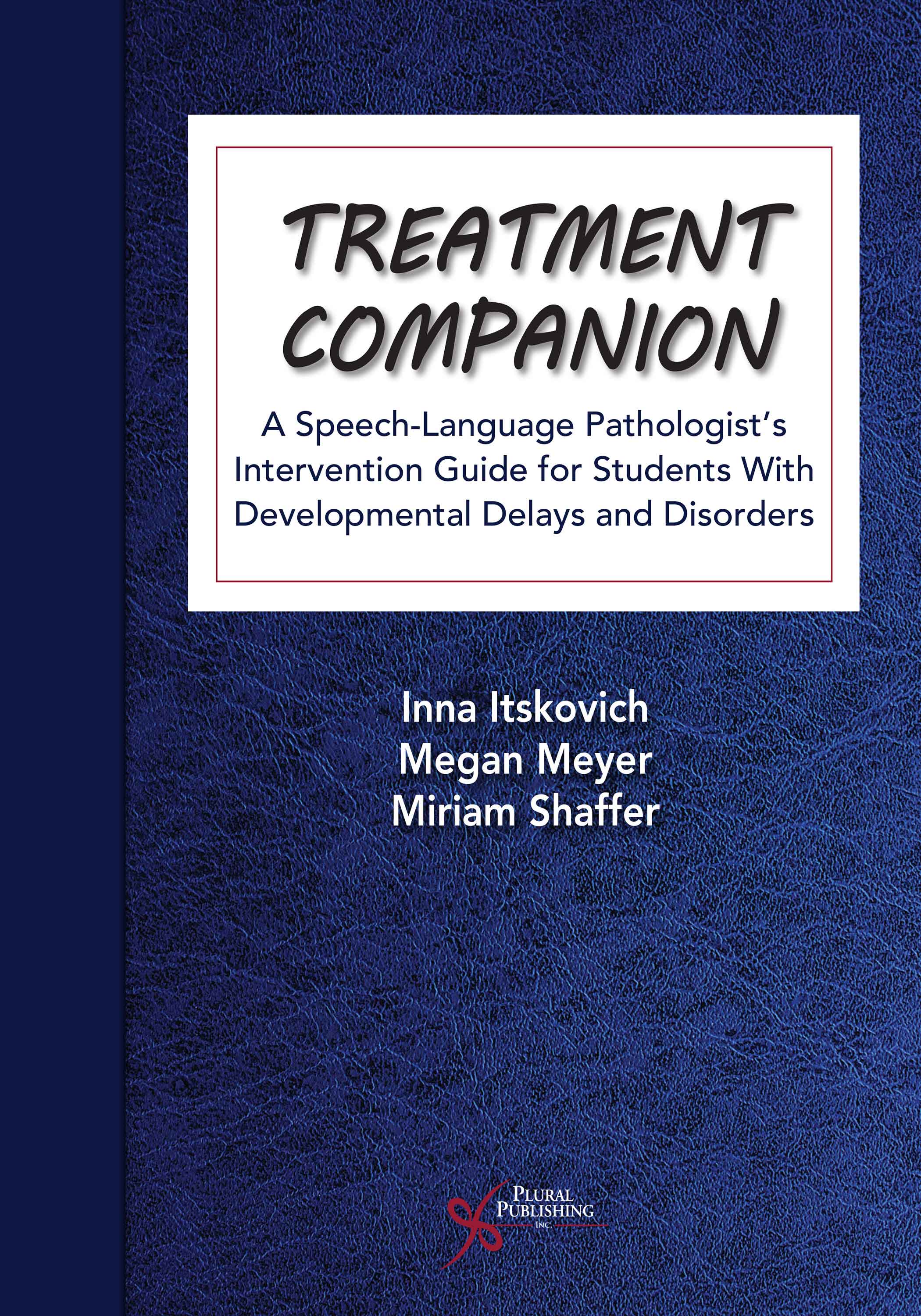
Treatment Companion: A Speech-Language Pathologist's Intervention Guide for Students With Developmental Delays and Disorders
First Edition
Inna Itskovich, Megan Meyer, Miriam Shaffer
Details: 274 pages, B&W, Softcover, 8.5 " x 11"
ISBN13: 978-1-63550-481-1
© 2023 | Available
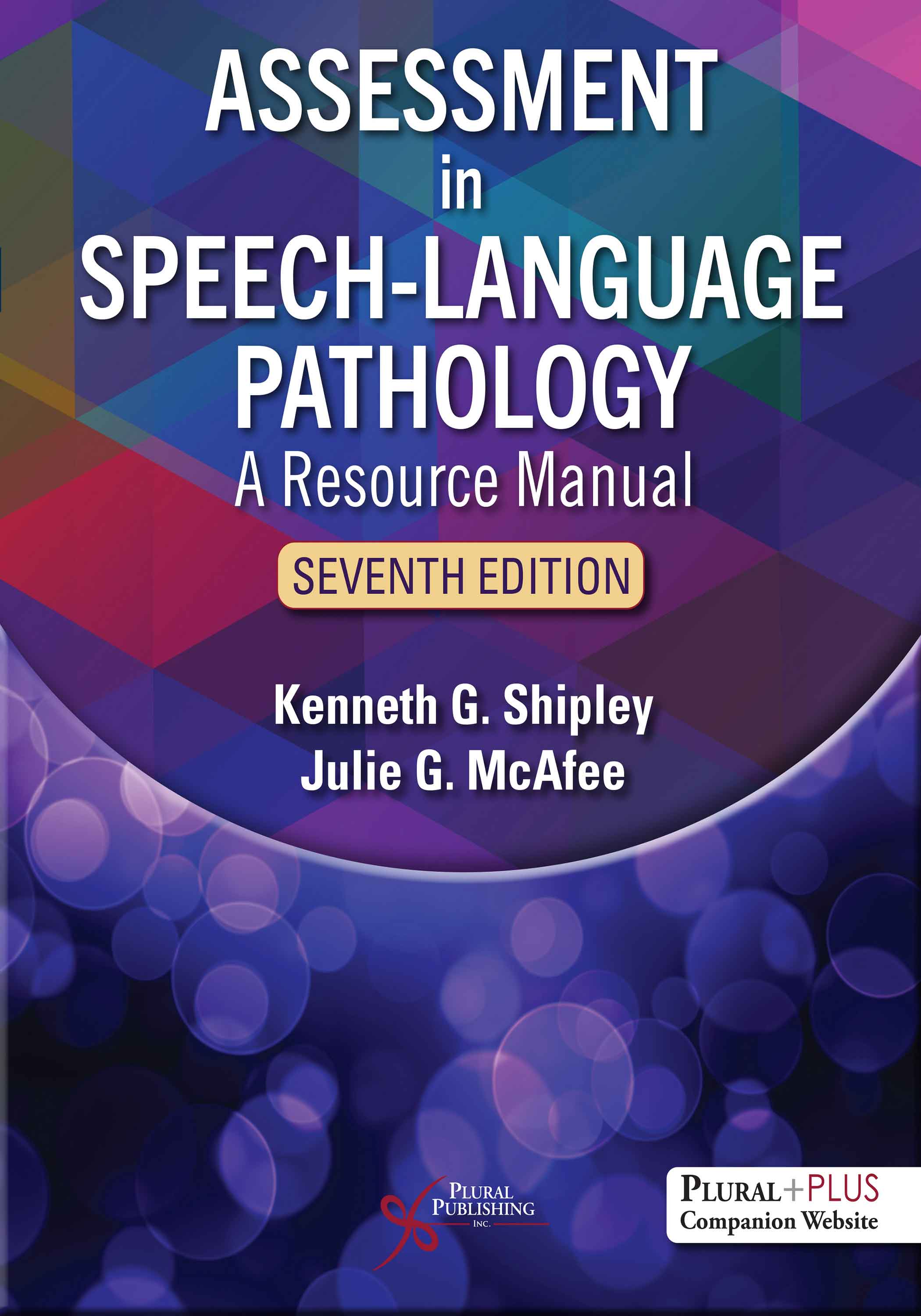
Assessment in Speech-Language Pathology: A Resource Manual
Seventh Edition
Kenneth G. Shipley, Julie G. McAfee
Details: 660 pages, Full Color, Softcover with layflat binding, 8.5" x 11"
ISBN13: 978-1-63550-710-2
© 2025 | Available
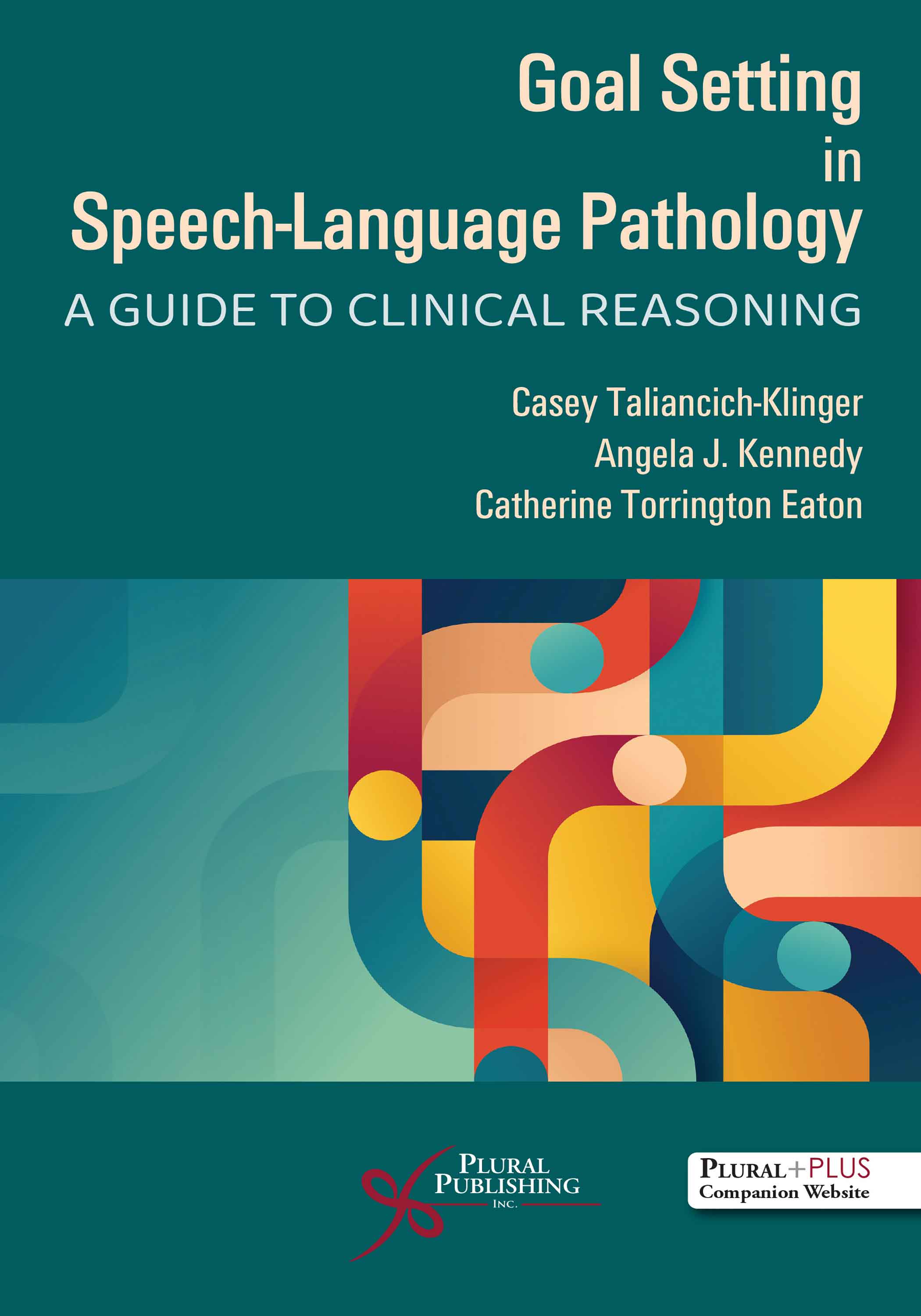
Goal Setting in Speech-Language Pathology: A Guide to Clinical Reasoning
First Edition
Casey Taliancich-Klinger, Angela J. Kennedy, Catherine Torrington Eaton
Details: 114 pages, B&W, Softcover, 6" x 9"
ISBN13: 978-1-63550-432-3
© 2025 | Available
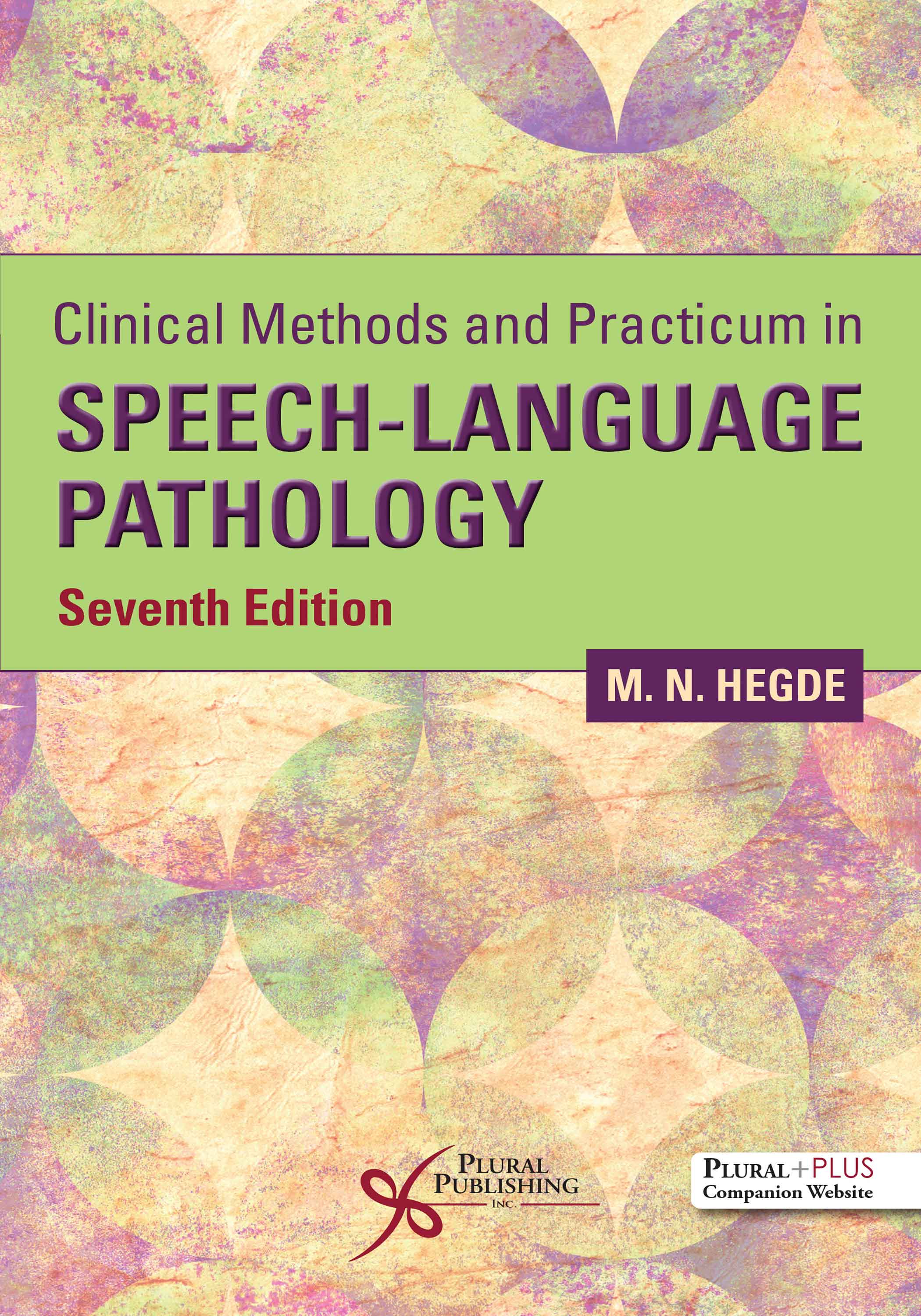
Clinical Methods and Practicum in Speech-Language Pathology
Seventh Edition
M.N. Hegde
Details: 413 pages, B&W, Softcover, 6" x 9"
ISBN13: 978-1-63550-691-4
© 2025 | Available
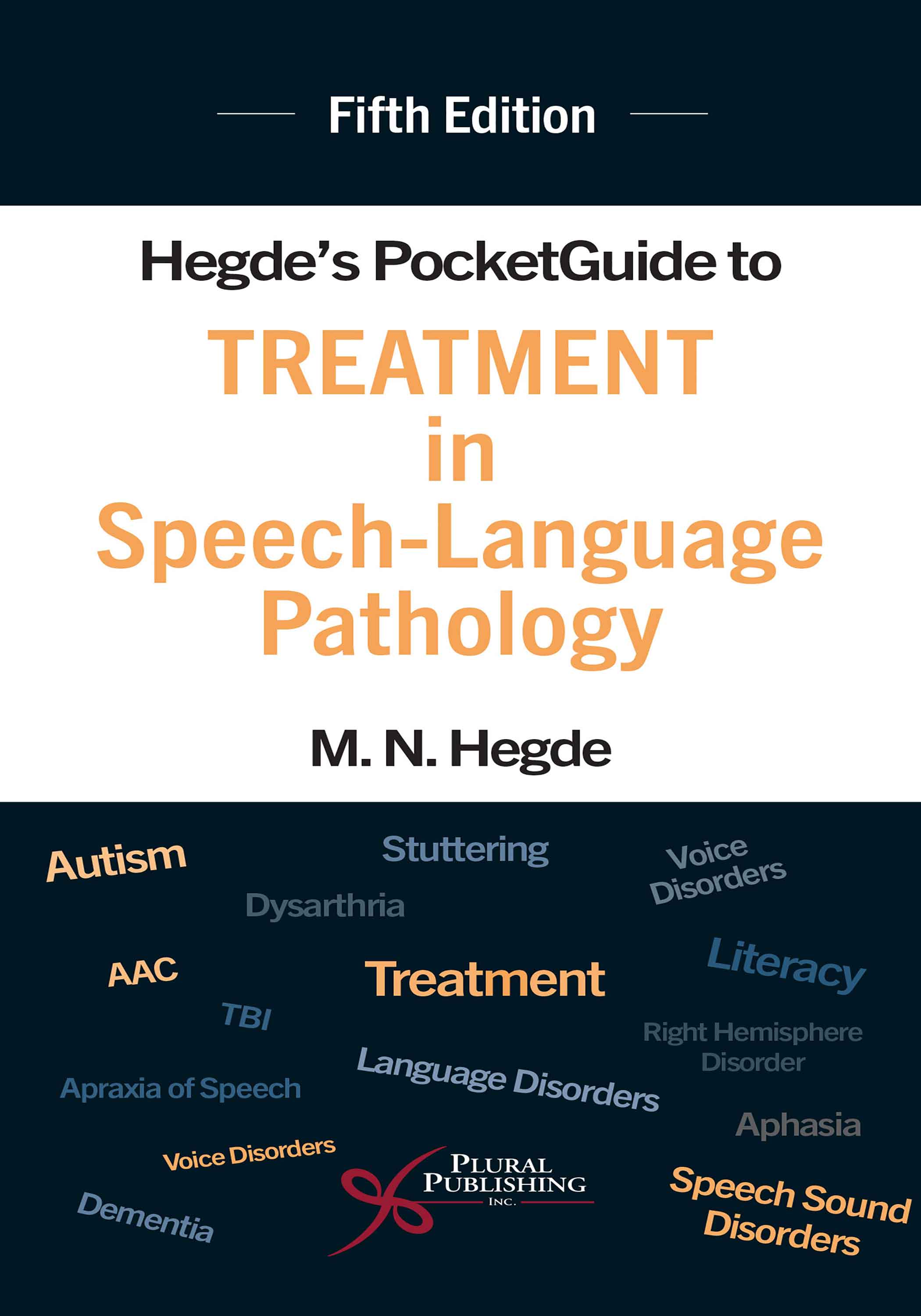
Hegde's PocketGuide to Treatment in Speech-Language Pathology
Fifth Edition
M.N. Hegde
Details: 475 pages, 2-Color, Softcover, 4.5" x 8"
ISBN13: 978-1-63550-786-7
© 2026 | Coming Soon
Release Date: 10/01/2025

